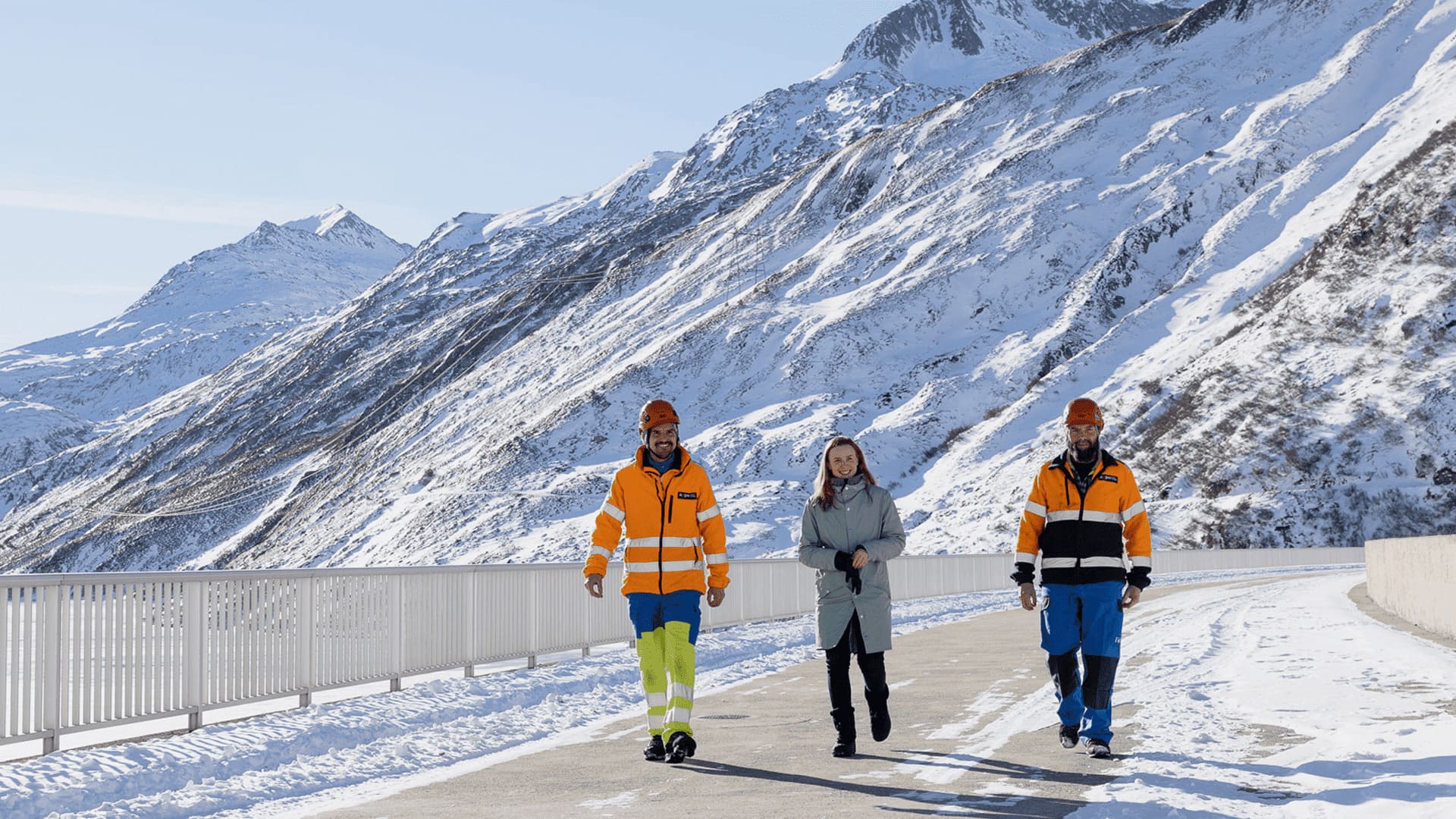29.11.2017 | ETH researchers identify locations for future hydropower
Hydropower: Do the melting glaciers help?
Climate change is causing glacier retreat in the Swiss Alps. New potential locations for hydropower plants will be ice-free and more melt water from glaciers could be available for production. According to studies by the ETH Zurich, there are seven potential, future locations.
Climate change is causing glacier retreat in the Swiss Alps. For hydropower in a periglacial environment, this has a double effect: New potential locations for hydropower plants will be ice-free and more melt water from glaciers could be available for production. This is the conclusion of researchers at the Energy Research Center of the ETH Zurich under the direction of Prof. Robert Boes and Dr. Daniel Ehrbar.
In their study on behalf of the Swiss Federal Office of Energy (SFOE), they applied glacier melting prognoses for various climate change scenarios and global circulation models on a total of 1,576 Swiss glaciers. This was followed by further investigation of ice-free locations with high run-off volumes. The most promising locations were identified based on a rating matrix. Production, installed capacity, storage capacity, investment costs and sediment continuity were the most important factors in the analysis.
According to the ETH, all reservoirs and power plants would have to be located in the new landscapes created by glacier melting on the edge of the glacier or directly below it. This proximity to the glacier represents an additional challenge for the construction of hydropower plants owing to temporary run-off and sediments.
Energy Strategy implementation
The Swiss Energy Strategy 2050 estimates a yearly power production of 37,400 GWh from hydropower in the year 2035. In 2016, annual production was 36,264 GWh. That means that an additional yearly net potential of approx. 1,136 GWh per year will have to be harnessed.
The seven plants identified by the researchers as potential hydropower storage locations (see table above) have sufficient technical potential according to their calculations to reach the interim power supply goal for 2035 according to the Energy Strategy 2050. Also taken into account was the new hydropower plant Gletsch-Oberwald (see box). The table contains yearly production estimates, installed capacity, storage volumes and the storage energy equivalent of new plants. The ETH researchers maintain that the latter is particularly relevant as a measure for winter production, and will become even more important with the increase of new renewable energies for power generation. Narrow gorges and steep rock banks could offer good technical conditions although natural hazards would have to be taken into account.
Difficult projects
However, the ETH researchers admit that the utilisation of the available hydropower potential would be difficult. Because: "Construction site preparation would be expensive, social controversies would arise since some locations are in protected areas, and integration into the existing, dense hydropower grid would represent a great challenge."
Furthermore, from the perspective of energy companies like Axpo, it must be noted that financing such projects would be more than a great challenge. In light of the persisting low market price for electricity: "The majority of Axpo hydropower plants do not earn enough money today to make the urgently needed investments in maintaining, let alone expanding capacities that would be necessary to fulfil the Energy Strategy."
Rhone Oberwald power plant
A new run-of-river power plant on the Rhone River is under construction in the area of the Oberwald Glacier. The owner is FFMV SA, Forces Motorices Valaisannes. The catchment is located in Gletsch at 1,750 metres above sea level and holds a water flow volume of 5.7 m³/s. The plant comprises an underground grit chamber, a pressure chamber and a flushing tunnel. The head-race tunnel has a pitch of about 13.2%. The control centre is located underground with a return tunnel to the Rhone. The cable conduit block is designed for a power connection of 16 kV. The installed capacity is 14 MW and production amounts to 41 GWh.




.jpg)





